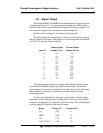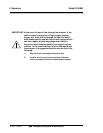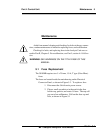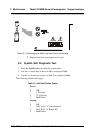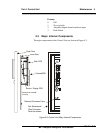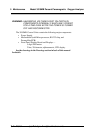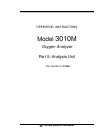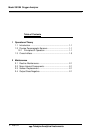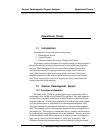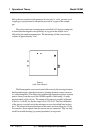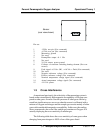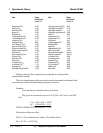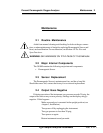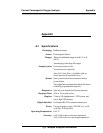
Part II: 1-1
Percent Paramagnetic Oxygen Analyzer Operational Theory 1
Teledyne Analytical Instruments
Operational Theory
1.1 Introduction
The analyzer is composed of three subsystems:
1. Paramagnetic Sensor
2. Sample System
3. Electronic Signal Processing, Display and Control
The sample system is designed to accept the sample gas and transport it
through the analyzer without contaminating or altering the sample prior to
analysis. The Paramagnetic Sensor is an electromechanical device that
translates the amount of oxygen present in the sample into an electrical
signal. The electronic signal processing, display and control subsystem
simplifies operation of the analyzer and accurately processes the sampled
data. The microprocessor controls all signal processing, input/output and
display functions for the analyzer.
1.2 Precise Paramagnetic Sensor
1.2.1 Principles of Operation
The heart of the 3010M is a paramagnetic type oxygen sensor that is
maintanance free and has a long lifetime. Oxygen has a very high magnetic
sucseptibility compared to other gases and thus displays a particularly para-
magnetic behavior. A small glass dumbbell filled with nitrogen and rotating
on a taut platinum wire is suspended in an inhomogneous magnetic field.
This glass dumbbell is diamagnetic and tends to rotate out of the magnetic
field. The strength of the resulting torque determined by an susceptibility of
the sample gas. This torque is compensated for by a counter torque induced
by an electrically charged platinum coil on the dumbbell. The zero position
of the dumbbell is controlled by means of an optical system consisting of a
light source, a mirror at the dumbbell axis and a pair of detectors. The
difference between the compensating currents required to bring the dumb-



